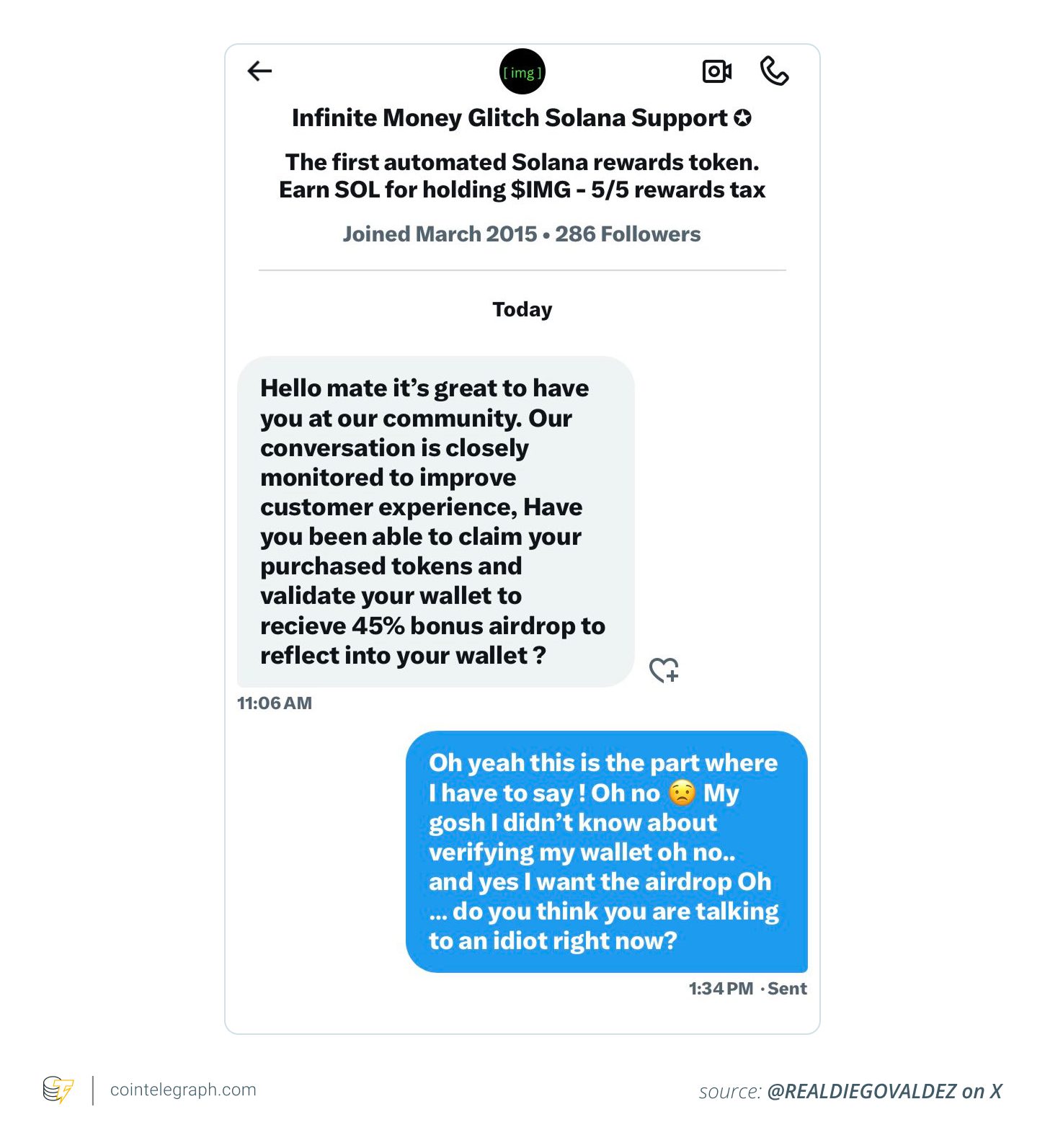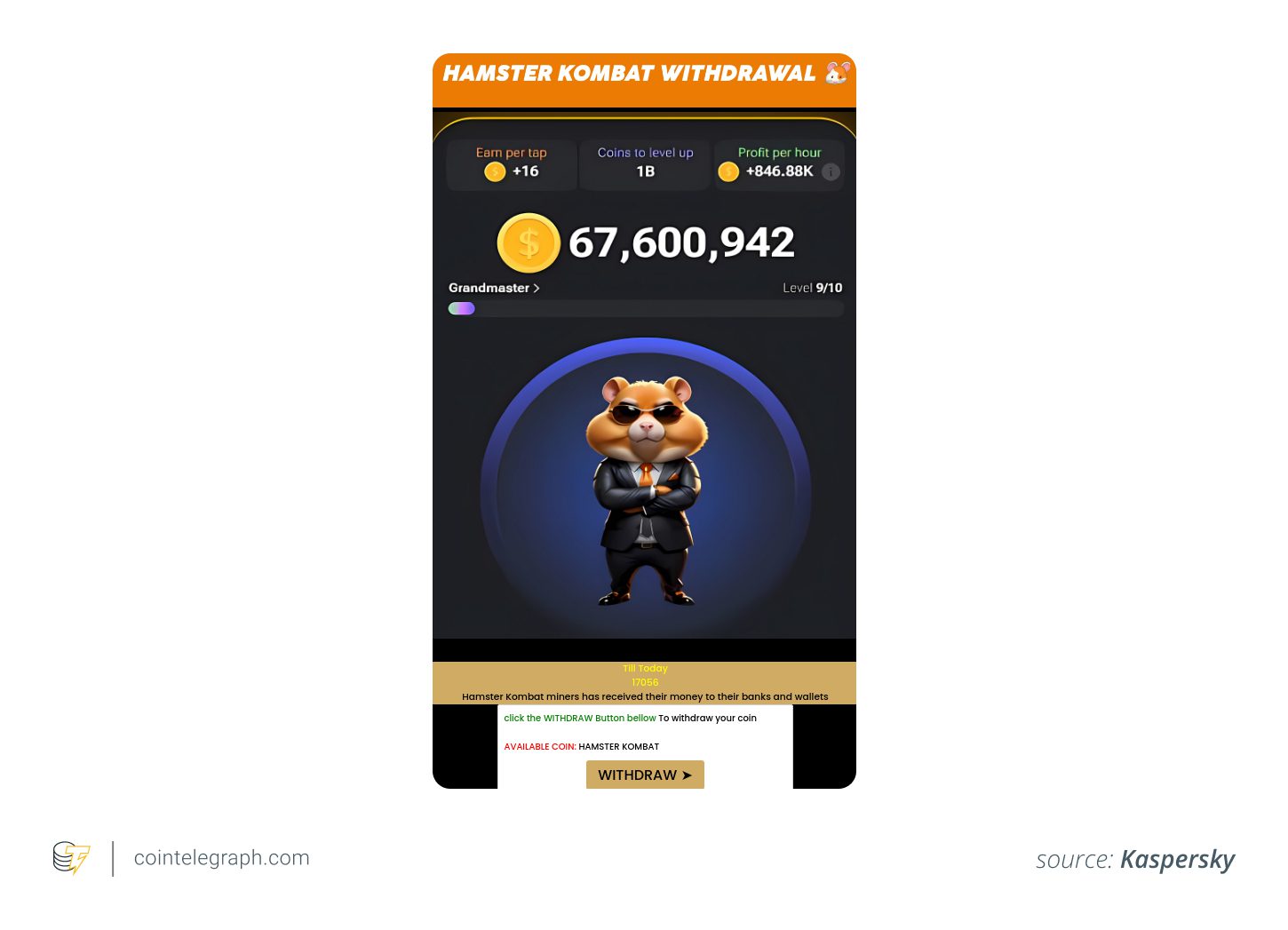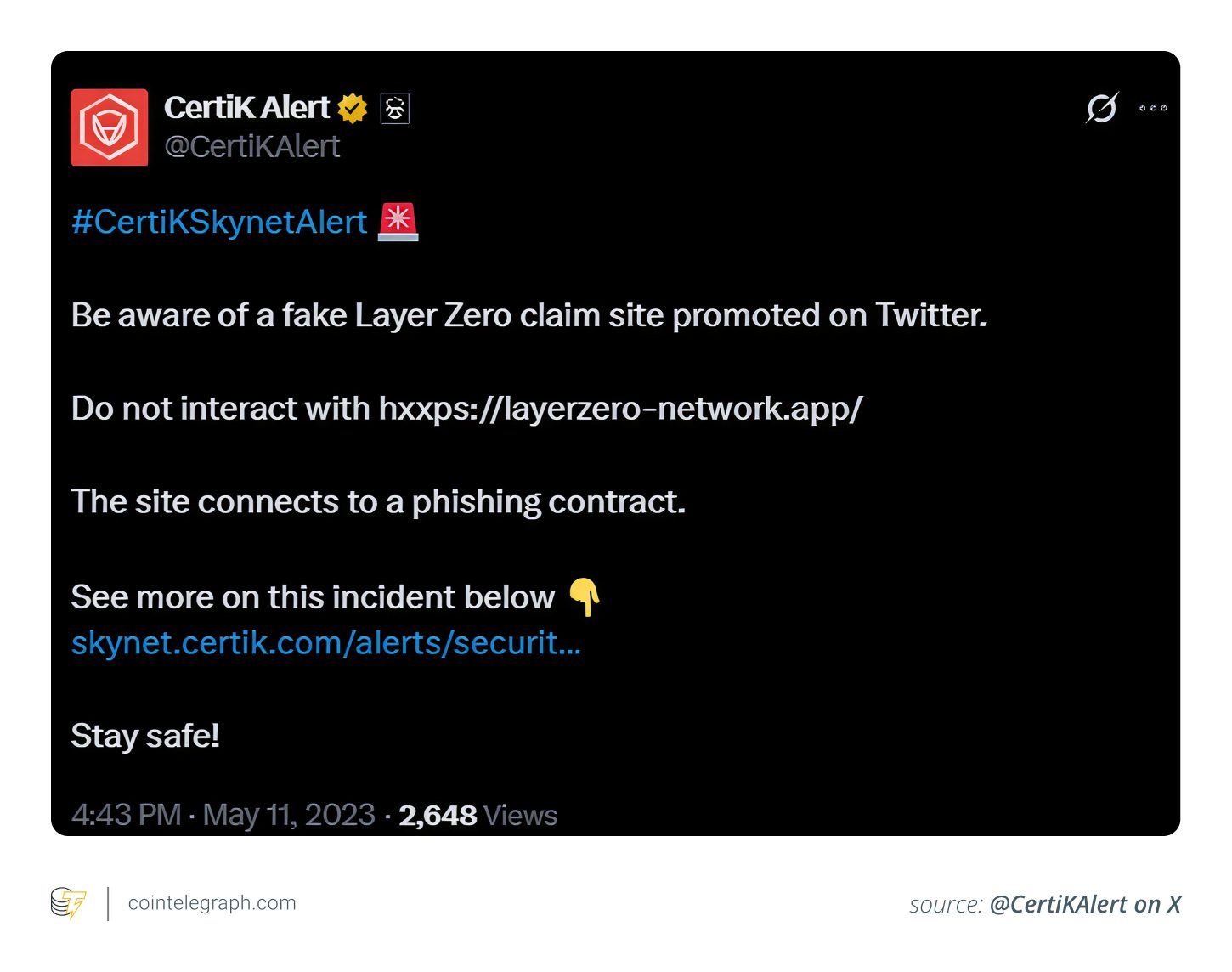Key takeaways
- Fake airdrops impersonate legitimate projects to steal private keys, trick users into signing malicious contracts, or demand upfront fees.
- Red flags include lack of official announcements, suspicious URLs, requests for private keys, poor grammar, and unrealistic promises.
- Always verify airdrop legitimacy through official channels and never share private keys or pay upfront fees.
- Future airdrops will likely use activity-based, retroactive, and AI-monitored models to reward genuine user engagement and reduce exploitation.
Cryptocurrency airdrops are often used to promote projects and attract new users. However, scammers frequently exploit this avenue by creating fake airdrops that can lead to significant financial losses. In 2024 and 2025, scams targeting projects like Hamster Kombat and Wall Street Pepe resulted in millions of dollars in losses. According to Chainalysis, crypto scams and fraud, including fake airdrops, amounted to at least $9.9 billion in global losses in 2024.
Understanding the warning signs is crucial to protecting yourself from these scams. This article will outline key red flags and provide practical tips to help you stay safe.
What are Fake Airdrops?
Airdrops involve distributing free tokens to users as part of marketing campaigns or to build community. Legitimate airdrops reward early adopters, increase token visibility, and promote network activity. Typically, participation requires minimal effort, such as signing up or holding a specific token.
However, scammers exploit the popularity of airdrops by promising free tokens in exchange for sensitive actions. These actions include sharing private keys, signing malicious contracts, or paying gas fees. Scammers may impersonate real projects using fake domains or social media accounts. These scams can appear convincing, making vigilance essential.
Did you know? In 2023, Inferno Drainer facilitated the theft of over $80 million through airdrop phishing campaigns, offering prebuilt kits for creating scam airdrop sites.
10 Red Flags of Fake Airdrops
Knowing the warning signs can help you avoid losing crypto or sensitive information:
1. No Official Announcement
- What to watch for: The absence of an announcement on the project’s official channels. Scammers often use direct messages, unofficial Telegram groups, or poorly designed websites.
- How to avoid: Always verify the airdrop’s legitimacy by checking the project’s official website, verified X account, or official Discord/Telegram channels.
2. Request for Private Key or Seed Phrase
- What to watch for: Requests to “verify” your wallet by providing your private key or seed phrase.
- How to avoid: Legitimate airdrops never ask for this information. If a website or individual requests your private key or seed phrase, it’s a scam.

3. Upfront Gas Fees or Crypto Payments
- What to watch for: Requirements to pay gas fees or other cryptocurrency payments to “unlock” tokens.
- How to avoid: Legitimate airdrops are typically free. If an airdrop requires payment, it’s likely a scam.
4. Suspicious URLs or Clone Sites
- What to watch for: Phishing websites that resemble legitimate crypto platforms.
- How to avoid: Carefully check the project’s URL for misspellings, extra characters, or alternate domain extensions.
Did you know? Some airdrops use retroactive criteria, rewarding users based on past activity, which can make you eligible for future rewards.
5. Poor Grammar and Urgent Language
- What to watch for: Poor grammar, spelling errors, or aggressive phrases like “Claim Now Or Lose Out!”
- How to avoid: Legitimate projects communicate professionally and clearly. Steer clear of announcements with errors or high-pressure language.
6. Fake Social Proof or Bot Comments
- What to watch for: Fake posts filled with fabricated social proof, such as bot comments claiming they received tokens.
- How to avoid: Research the token thoroughly, confirm its presence on reputable platforms, and seek authentic user feedback.
7. Unknown or Nonexistent Token Projects
- What to watch for: Tokens tied to obscure projects that lack a white paper, roadmap, or verifiable team.
- How to avoid: Research the token extensively before participating. If the project lacks basic details, it’s likely fraudulent.
8. Token Approval Traps
- What to watch for: Requests to connect your wallet and grant token spending permissions.
- How to avoid: Exercise caution when approving token transactions, especially from unfamiliar sources.
9. Redirects to Malicious Wallet Drainers
- What to watch for: Airdrop links that redirect users to malicious DApps known as wallet drainers.
- How to avoid: Always review transaction pop-ups carefully before signing. Use browser wallets with phishing protection.
10. Unrealistic Reward Promises
- What to watch for: Extravagant claims, such as “Instantly claim $2,000 in free tokens!”
- How to avoid: Be suspicious of claims that seem too good to be true. Legitimate airdrops usually offer modest rewards.
Did you know? In 2021, the Ethereum Name Service (ENS) airdropped governance tokens to .eth domain holders, with many receiving thousands of dollars.
Examples of Fake Airdrops
Here are some examples of well-known fake airdrops to help you understand how these fraudulent actions scam unsuspecting victims:
Hamster Kombat
Hamster Kombat is a Telegram-based tap-to-earn game where players manage a virtual crypto exchange as a hamster CEO. It gained significant popularity in 2024, attracting over 250 million users. However, this popularity also made it a target for scammers.
Malicious actors have created fake Hamster Kombat airdrops to steal users’ crypto wallet credentials.

Wall Street Pepe
Wall Street Pepe ($WEPE) is an Ethereum-based memecoin that combines meme culture with trading utilities. Scammers created fake airdrops mimicking the official website to steal users’ assets.
Users were lured with promises of an airdrop, prompting them to connect their digital wallets and sign malicious contracts.

HEX
HEX is a token designed to capitalize on cryptocurrency market growth by supporting coin locking and staking for fixed durations.
A fraudulent webpage replicated the official HEX site to conduct a fake airdrop. Connecting a crypto wallet to this site activated a malicious contract that drained funds.

Sui
Sui (SUI) is a layer-1 blockchain and smart-contract platform engineered for speed, privacy, and accessibility.
Scammers posted a fraudulent webpage offering a fake Sui airdrop. Users who connected their wallets unwittingly signed a malicious contract, allowing scammers to steal their funds.

LayerZero
The LayerZero airdrop used a “proof-of-donation” system, requiring users to donate $0.10 per token to the Protocol Guild instead of offering tokens for free.
In July 2023, CertiK warned users about fake airdrops being promoted on X by accounts impersonating LayerZero, leading users to a website resembling the official site.

The Evolution of Crypto Airdrops
Crypto airdrops are evolving beyond simple giveaways to more secure and engaging methods. Projects are increasingly using activity-based airdrops, rewarding users for contributions like staking, testing apps, and participating in governance.
Distribution models such as snapshot-based allocations and retroactive rewards are also gaining traction, enhancing transparency and ensuring tokens reach active community members. Integrating AI and machine learning is improving fraud detection and strengthening airdrop security.
This transformation reflects the move towards responsible token distribution practices that align with decentralization and community empowerment goals.
This article does not contain investment advice or recommendations. Every investment and trading move involves risk, and readers should conduct their own research when making a decision.